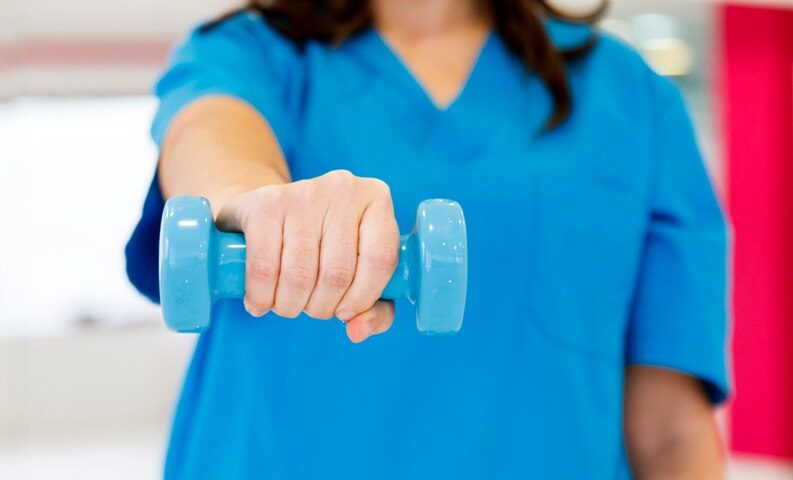
“Role of Digital Tools in Modernization of Dental Clinics and Increasing Treatment”
February 22, 2025
Dental Extraction Technology
March 2, 2025Dentist (or dental hygienist) need to be able to perform delicate fine motor tasks as a part of their job, since their hands have to stay strong and steady. For any of the cleanings (from basic to a complex extraction), the skill to maneuver instruments with delicacy results in patient comfort and successful treatment. Performing daily fine motor tasks, to then continue for many hours on a difficultly steady hand creates strength and endurance. That is why hand strength is one of the main focus to maintain highest quality practice among dental professionals. Here we discuss critical instruments, how strategies of hand strength created to be exercise as well as the newest darlings face in endorsement X-Forceps, which change dental extraction.
Hand Strength – Dental Hygiene Trick
As Dental Hygienists, we rely on our hands for not only a bunch of detailed and repetitive tasks daily. Without sufficient strength and control, eventually your hand & arm will be tired and start to capabilities down causing decreased performance lasting issues like carpal tunnel syndrome/ joint pain. Smashing my hands, fingers and wrists helps enormously with endurance and controls when it comes to instrument handling.
Q: What is one of the most effective ways to prevent and improve Strength of your hands? This involves the application of hand grippers, stress balls and resistance band to develop much needed strength for doing advanced surgical procedures on the mouth. It also applies finger isolation movements like pinching exercises with rubber bands to increase dexterity, making tools manipulation easier for dental hygienists. Finally, another key practice is stretching pre & post work to keep tension off and ensure that the body can glide through its restricted mechanical systems. Fingertips and forearm stretching can help prevent injuries and prevent repetitive strain disorders.
Dental hand strengthening: The other key element in helping hands get stronger via resistance training. Dental professionals can also exercise wrist and forearm muscles to withstand extended periods of work with light weights or resistance bands. Drill Precision (e.g. handling of low-pressure beads, manipulating complex items) also increases tactile sense so there is the best possible control in treating of patients. With them practiced repetitively over a long period, these improve the dexterity and hand endurance for good.
Dental Practitioner Hand Training
Highly exact motions demanding endurance and stability are carried out by dentists. Including a series of activities meant to improve flexibility and strength is vital for maximum hand function. Extractions, fillings, and cleansings all repetitive chores can result in hand fatigue, which is why it is vitally important for dentists to continuously participate in strengthening workouts to keep them at top performance.
Stretches of the wrist extensors and flexors
One basic workout is the wrist flexor stretch. This calls for one arm to be stretched with the palm pointed up and the other hand to be used gently to draw the fingers back. Keeping this stretch for 15 to 20 seconds at minimum helps to increase flexibility and avoid stress. In like manner, you can extend the arm with the palm down and drag the fingers toward the body to perform wrist extensor stretches. Daily practicing of these movements helps increase hand mobility and decrease rigidity.
Finger Dexterity and Grip Improvement
Another key component of a dentist’s capacity to carry out gentle operations is finger dexterity. Beginning with quick finger taps against the thumb, one modest but powerful exercise is the finger tap. Faster completion of this exercise helps to improve control and agility. A grip trainer or stress ball can also improve the general endurance of the hand. Squeezing the ball hard for five seconds and releasing helps to develop the essential muscle capacity needed for holding dental instruments for long stretches.
Drills in thumb opposition and rubber band resistance.
Wrapping rubber bands around the fingers to generate resistance while stretching them apart is another useful approach. This builds the extensor muscles, which are needed for keeping hands steady throughout operations. Touching the tip of the thumb to each fingertip in turn in addition improves coordination and flexibility. Including these activities in a daily schedule helps dentists to boost endurance and keep accurate hand coordination all their working years.
Fundamental Tools of a Dentist
Every dentist depends on vital tools to carry out several operations effectively. Created with great care, these instruments help to guarantee accuracy and precision while also supporting patient treatment.
The dental mirror, which lets dentists see parts of the mouth not observable to the naked eye, is among the most often used tools. This little but vital device guarantees precise diagnoses by offering a good look of gums and teeth. Also used to identify gum disease and cavities, the dental explorer or probe is another basic tool. Identifying regions calling for treatment depends on these pointed instruments.
Particularly for plaque and tartar removal, dental operations depend greatly on scalers and curettes, which are also important implements. Maintaining oral health and avoiding gum diseases like gingivitis depend on these appliances. Another important part of a dentist’s equipment is forceps, which are used for extractions. Their structure enables controlled extraction of teeth with a strong grip and little surrounding tissue damage. Furthermore essential, since they assist to clear the mouth of saliva and debris during procedures, therefore keeping the area clean for good treatment, are suction devices.
Dentist’s Tool Elevator
Designed to help with the extraction procedure by loosening teeth before forceps are used, a dental elevator is a specialized tool. Where teeth are buried or challenging to pull out, this assay is absolutely vital. Different kinds of elevators fulfill various purposes, each designed to meet a specific requirement at extraction time.
For instance, periosteal elevators are mostly employed to free soft tissue from the bone, therefore offering improved access to the tooth. Elevators that are straight, however, apply leverage to free the tooth from its socket hence making the extraction more effective. Since they enable dentists to gently remove little root fragments with accuracy, Cryer elevators are especially helpful for taking out broken roots. Root tip elevators are also meant to recover small, fractured root tips, therefore guaranteeing no remains to left. As good technique minimizes patient discomfort and enhances treatment results, any dentist who does extractions must first become adept at using these instruments.
Changing how dental extractions distressing.
Traditional dental forceps have gone mostly unaltered for decades and need dentists to use great hand strength during extractions. Nevertheless, the use of XForceps offers a creative answer that greatly improves productivity and decreases strain on hands of dentists.
XForceps uses cuttingedge technology that enables controlled and exact extractions, unlike regular forceps. XForceps can reduce hand tiredness during extended operations since they raise a dentist’s gripping power by 40%. It also sports a pressure sensor built in which stops too much force from being applied and therefore lowers the chances of tooth fractures.
Also revolutionizing the product is the integrated camera system, including live screen graphics. By guaranteeing better accuracy, this technology enables dentists to closely follow their work and make exact motions. Moreover, XForceps is ergonomically engineered to improve comfort and ease of handling even in demanding cases. These forceps come in several sizes to suit many dental removal requirements—from adult to pediatric patients.
Final Thoughts:
As hand strength directly affects accuracy, speed, and patient comfort, it is a key part of dentistry. Dental practitioners can enhance their methods while reducing stress by including strength training, using correct equipment, and exploiting developments including XForceps. XForceps among other advancements will help to improve the field as dental technology keeps advancing, hence reducing physical demands on doctors and making procedures more efficient.

